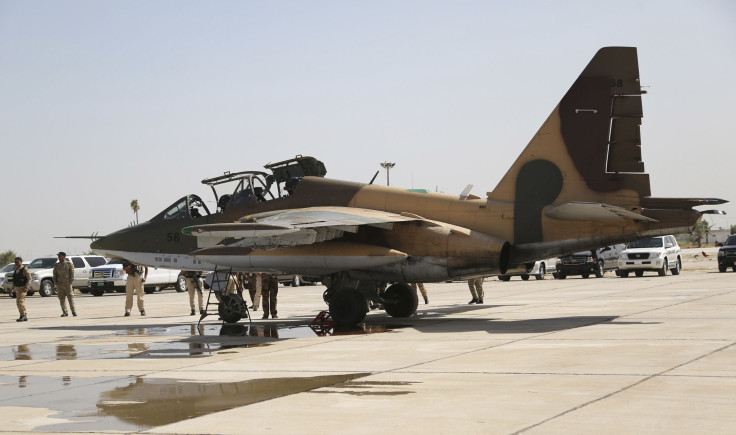Iraqi Air Force, In Combat Debut, Assists Peshmerga, Coalition In Mission To Push ISIS Back From Mount Sinjar

The U.S. State Department said Monday Iraqi air power helped the Kurdish peshmerga and U.S.-led coalition forces push back the Islamic State group from Mount Sinjar. The offensive on the mountain marks the first time the Iraqi air force contributed to a high-profile offensive against the Sunni militant group. Previously, only the U.S.-led coalition air forces, as well as some Iranian jets, had carried out strikes against ISIS.
The Iraqi air force said in August it had struck ISIS targets near Erbil, but others attributed those strikes to the U.S. The Pentagon said earlier this month Iran's air force attacked ISIS targets in eastern Iraq. Iran denied it had dropped the bombs although photographs surfaced of planes that were most likely Iranian.
State Department deputy spokeswoman Marie Harf was asked Monday at the regular U.S. State Department press briefing whether Iraq had the air capability to contribute to such a mission. "Well, clearly they were able to help," she said.
Previous reports indicated airstrikes by Australian F-18F Super Hornet fighter-bombers helped push back Islamic State militants from Mount Sinjar in northern Iraq as Kurdish forces fought to regain control. There was no mention of Iraqi air power.
Mount Sinjar has seen intense fighting between the Kurdish peshmerga and Islamic State forces since the extremist group threatened in August to kill the Yazidi minority population that had taken refuge there. Tens of thousands of Yazidis fled the area to safety with U.S. support during the summer, but several thousand stayed, unable to leave because ISIS had surrounded the mountain. But on Monday Kurdish forces announced they had finally retaken the mountain and secured the area. Australian airstrikes supported the offensive throughout the weekend.
It is not clear which Iraqi aircraft may have been used in the offensive. Until recently, Iraq's air force was minimal after its destruction by coalition forces in the 1991 and 2003 wars. It was made up of only a few dozen Cessna prop planes carrying American-supplied Hellfire missiles as well as some trainer aircraft that could carry a small number of bombs, plus Russian-made attack helicopters, which would have been vulnerable to ISIS groundfire and are unlikely to have been used.
Iraq lacked any planes capable of heavy ground attack until it received recently some Russian-made Su-25 jets from Iran. A sturdy, heavily armed airplane originally built by the Soviet Union to stop American tanks, the Su-25 would have been an ideal candidate to hit ISIS positions. However, it is not clear how many of these planes are currently in Iraq or if any of them are being used.
Iraq also bought 36 F-16s from the United States, at a cost of several billion dollars, that would give it one of the most powerful air capabilities in the region. But it doesn't have any of them yet, nor is it clear when if ever those planes will make it to Iraq. Iraqi pilots are learning how to fly the planes in the U.S., and the Department of Defense said last month the F-16s would be delivered to Arizona instead of Baghdad because of the decreasing security situation in Iraq.
© Copyright IBTimes 2024. All rights reserved.











